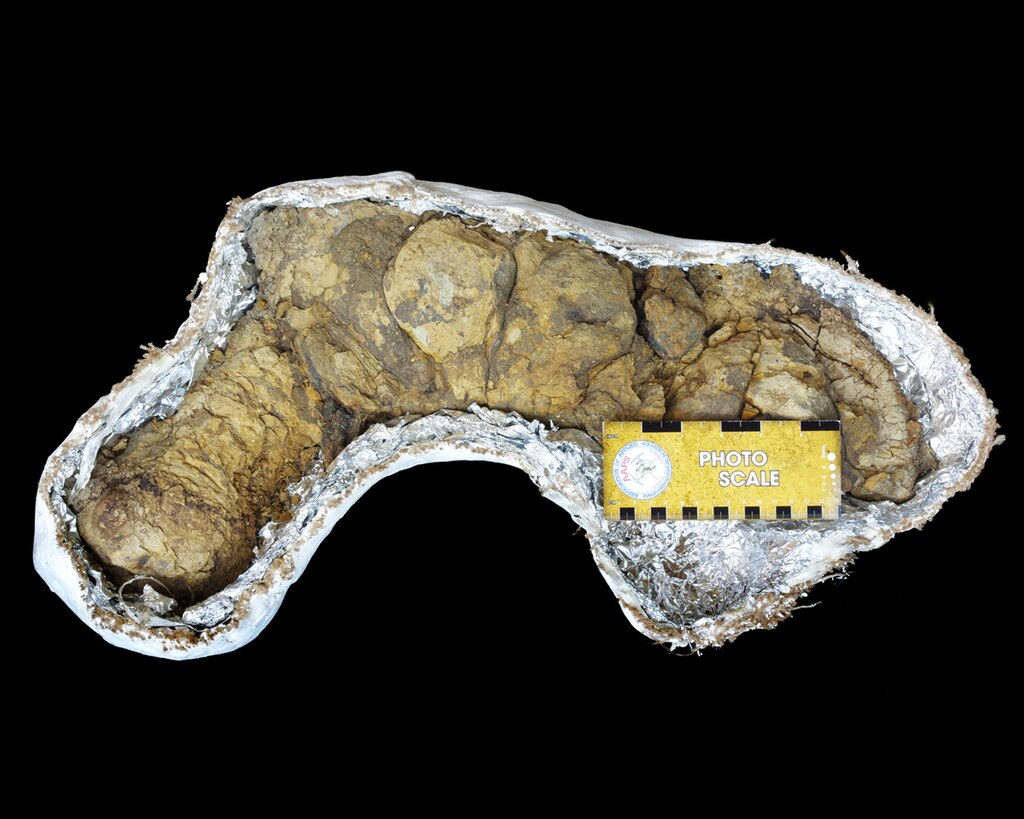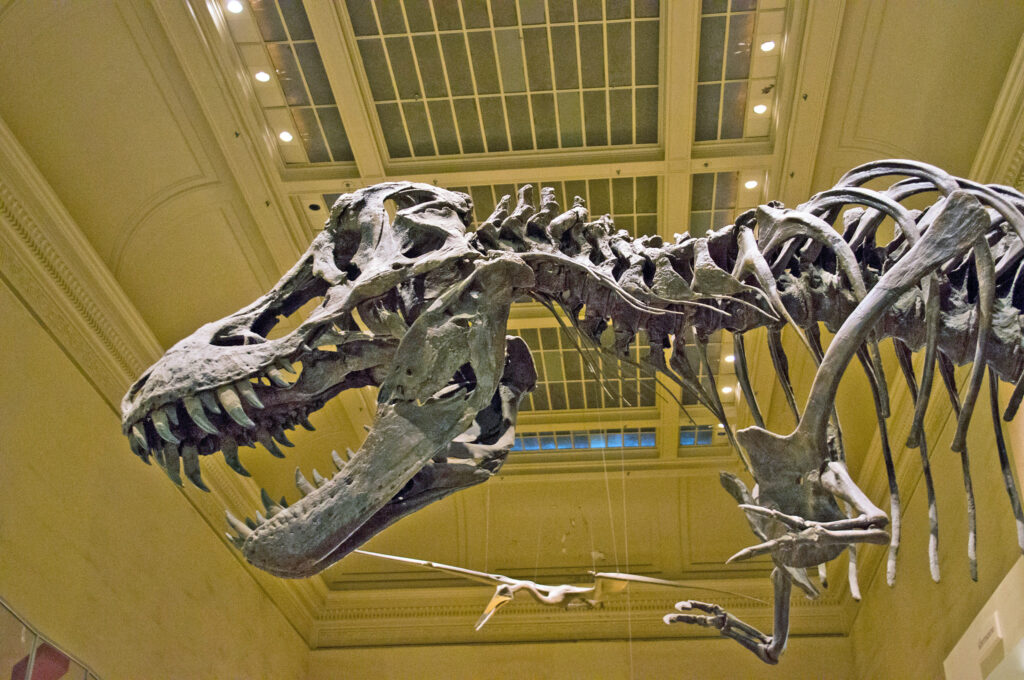Picture this: you’re standing in a museum, gazing at what appears to be one of the most extraordinary creatures ever discovered. Its body seems almost too perfect, too amazing to be real. Well, sometimes your instincts are right. In the world of paleontology, one of the most embarrassing and fascinating cases involves a fossil that fooled scientists for decades – because it was literally two different animals stuck together with glue.
The Discovery That Shocked the Scientific World
In 1999, a fossil dealer in China unveiled what seemed to be the missing link between dinosaurs and birds. The specimen, later named Archaeoraptor liaoningensis, appeared to have the head and body of a bird combined with the tail of a dinosaur. National Geographic magazine was so impressed they featured it on their cover, calling it one of the most important discoveries of the century. The scientific community buzzed with excitement as researchers believed they had found the perfect transitional fossil. Little did they know, they were about to become part of one of paleontology’s most notorious scandals.
When Good Science Goes Terribly Wrong
The Archaeoraptor specimen looked convincing at first glance, but experienced paleontologists began noticing something odd about its construction. The way the bones fit together seemed unnatural, almost forced. Some sections appeared darker than others, suggesting different preservation conditions. What’s more troubling is that the fossil had been purchased from a commercial dealer rather than excavated by trained scientists. This should have been a red flag from the beginning, but the excitement of discovery clouded professional judgment.
The Art of Fossil Forgery in China
During the 1990s, fossil forgery became a lucrative business in China’s Liaoning Province, where some of the world’s most spectacular fossils are found. Local farmers and dealers discovered that combining different fossil pieces could create more valuable and impressive specimens. They used everything from cement to super glue to attach bird fossils to dinosaur tails, fish heads to mammal bodies, and even completely fabricated features. The practice became so common that paleontologists developed the term “fossil salad” to describe these mixed-up creations. What made these forgeries particularly convincing was the skill of the forgers, who understood enough about anatomy to create plausible-looking creatures.
How Scientists Finally Exposed the Truth
The unraveling of the Archaeoraptor hoax began when Chinese paleontologist Xu Xing noticed something suspicious about the tail portion of the fossil. He had been studying similar specimens and realized that the tail of Archaeoraptor matched exactly with another fossil in a Chinese museum. Using advanced imaging techniques, including CT scans and X-ray analysis, researchers confirmed their worst fears. The “revolutionary” fossil was actually composed of at least two different animals: the body of a primitive bird called Yanornis and the tail of a small dinosaur called Microraptor. Additional analysis revealed traces of modern adhesive materials that had been used to bond the pieces together.
The National Geographic Embarrassment
National Geographic’s premature announcement of the discovery became one of the most embarrassing moments in the magazine’s history. They had bypassed the normal peer-review process, publishing the story before other scientists could properly examine the evidence. When the truth came out, the magazine had to issue a public retraction and apology. The incident highlighted the dangers of rushing scientific discoveries to publication without proper verification. It also sparked important discussions about the ethics of purchasing fossils from commercial dealers rather than supporting legitimate scientific excavations.
Other Famous Cases of Composite Fossils
Archaeoraptor wasn’t the first or last case of composite fossil fraud, though it was certainly the most publicized. In the 1800s, fossil dealers in Germany regularly combined different fish fossils to create more complete specimens. The famous “Piltdown Man” hoax involved combining a human skull with an orangutan jaw, fooling scientists for over 40 years. More recently, several “feathered dinosaur” fossils from China turned out to be combinations of different species. Each case teaches paleontologists valuable lessons about the importance of careful examination and scientific skepticism, even when discoveries seem too good to be true.
The Real Science Behind Bird-Dinosaur Evolution
While Archaeoraptor was fake, the genuine relationship between birds and dinosaurs is one of paleontology’s greatest success stories. Legitimate fossils have provided overwhelming evidence that birds are living dinosaurs, descended from small, feathered theropods. Real transitional fossils like Sinosauropteryx, Caudipteryx, and the genuine Microraptor show the gradual development of flight-capable features. These authentic discoveries tell a much more fascinating story than any forged specimen ever could. The evolutionary path from dinosaur to bird involved millions of years of gradual changes, not sudden dramatic transformations.
Modern Technology’s Role in Detecting Fakes

Today’s paleontologists have sophisticated tools for detecting fossil forgeries that weren’t available in the 1990s. High-resolution CT scanners can reveal internal structures and detect artificial joints or modern materials. Chemical analysis can identify recent adhesives, paints, or other substances that don’t belong in ancient rocks. Digital imaging techniques can detect inconsistencies in bone texture and coloration that might indicate tampering. These technologies have become essential weapons in the fight against fossil fraud, helping protect both scientific integrity and unwary collectors from expensive mistakes.
The Economics of Fossil Fraud
The financial incentives behind fossil forgery are enormous, with rare specimens selling for hundreds of thousands or even millions of dollars. A complete dinosaur skeleton can be worth more than a luxury sports car, creating powerful motivations for deception. Forgers often target wealthy private collectors who may lack the scientific expertise to spot fakes. The black market trade in fossils also robs legitimate scientific institutions of important specimens that could advance our understanding of prehistoric life. This economic pressure continues to drive the creation of fake fossils, making vigilance more important than ever.
Impact on Scientific Trust and Reputation
The Archaeoraptor scandal damaged more than just individual reputations – it shook public trust in paleontological research. Media outlets became more skeptical of fossil discoveries, sometimes dismissing legitimate finds along with fraudulent ones. Young scientists learned hard lessons about the importance of thorough verification before making public announcements. The incident also highlighted the tension between scientific caution and public excitement about prehistoric discoveries. However, the paleontological community’s transparent handling of the scandal ultimately strengthened the field by demonstrating science’s ability to self-correct when errors are discovered.
Lessons for Modern Fossil Hunters
The Archaeoraptor case offers valuable lessons for anyone interested in fossil collecting or paleontology. First, extraordinary claims require extraordinary evidence – if a fossil seems too perfect or too convenient, it deserves extra scrutiny. Second, the source of a fossil matters as much as its appearance; specimens with unclear origins should be viewed with suspicion. Third, peer review and scientific consensus take time for good reasons, and rushing to publicize discoveries often leads to embarrassment. Finally, the most important discoveries often come from patient, systematic research rather than sensational finds.
The Continuing Battle Against Fossil Fraud
Despite increased awareness and better detection methods, fossil forgery remains a persistent problem in paleontology. New techniques for creating convincing fakes emerge regularly, requiring constant vigilance from researchers and collectors. International cooperation between museums, universities, and law enforcement agencies has improved, but the global nature of the fossil trade makes regulation challenging. Educational efforts aimed at both scientists and the public continue to be crucial in preventing future scandals. The paleontological community has also developed stricter ethical guidelines for fossil acquisition and publication.
What This Means for Our Understanding of Evolution
While the Archaeoraptor hoax was embarrassing, it ultimately didn’t damage the fundamental understanding of bird-dinosaur evolution. If anything, the incident motivated paleontologists to be more rigorous in their methods and more careful in their claims. The abundance of legitimate transitional fossils discovered since then has only strengthened the evidence for evolutionary relationships. The scandal also demonstrated the self-correcting nature of science – when errors are made, the scientific community works to identify and fix them. This process, though sometimes messy and public, is what makes science trustworthy in the long run.
The Human Side of Scientific Discovery

The Archaeoraptor story reminds us that scientists are human beings, subject to the same excitement, ambition, and occasional poor judgment as anyone else. The researchers involved weren’t villains – they were passionate scientists who wanted to share an amazing discovery with the world. Their mistake was letting enthusiasm override caution, a trap that’s easy to fall into when dealing with potentially groundbreaking finds. The incident humanizes the scientific process and shows that even experts can be fooled by skillful deception. It also demonstrates the importance of institutional safeguards and peer review in preventing individual mistakes from becoming major embarrassments.
Moving Forward: Better Practices and Brighter Futures
The lessons learned from the Archaeoraptor scandal have led to significant improvements in how paleontologists handle new discoveries. Museums now have stricter policies about acquiring fossils from commercial sources. Scientific journals require more thorough peer review for extraordinary claims. Imaging technology continues to improve, making it harder for forgers to fool experts. Perhaps most importantly, the paleontological community has become more comfortable with uncertainty and more willing to say “we don’t know yet” rather than rushing to conclusions. These changes have made modern paleontology more reliable and trustworthy than ever before.
The story of Archaeoraptor serves as a powerful reminder that in science, things aren’t always what they appear to be. While the hoax was embarrassing for everyone involved, it ultimately strengthened paleontology by forcing the field to confront its weaknesses and develop better practices. The real tragedy would have been if scientists had learned nothing from their mistakes. Instead, they used this painful experience to build a more robust and reliable approach to studying prehistoric life. Sometimes the most valuable lessons come from our biggest failures, and the Archaeoraptor scandal proves that even glued-together fossils can teach us something important about the nature of scientific discovery. What other “perfect” specimens might be hiding similar secrets?



